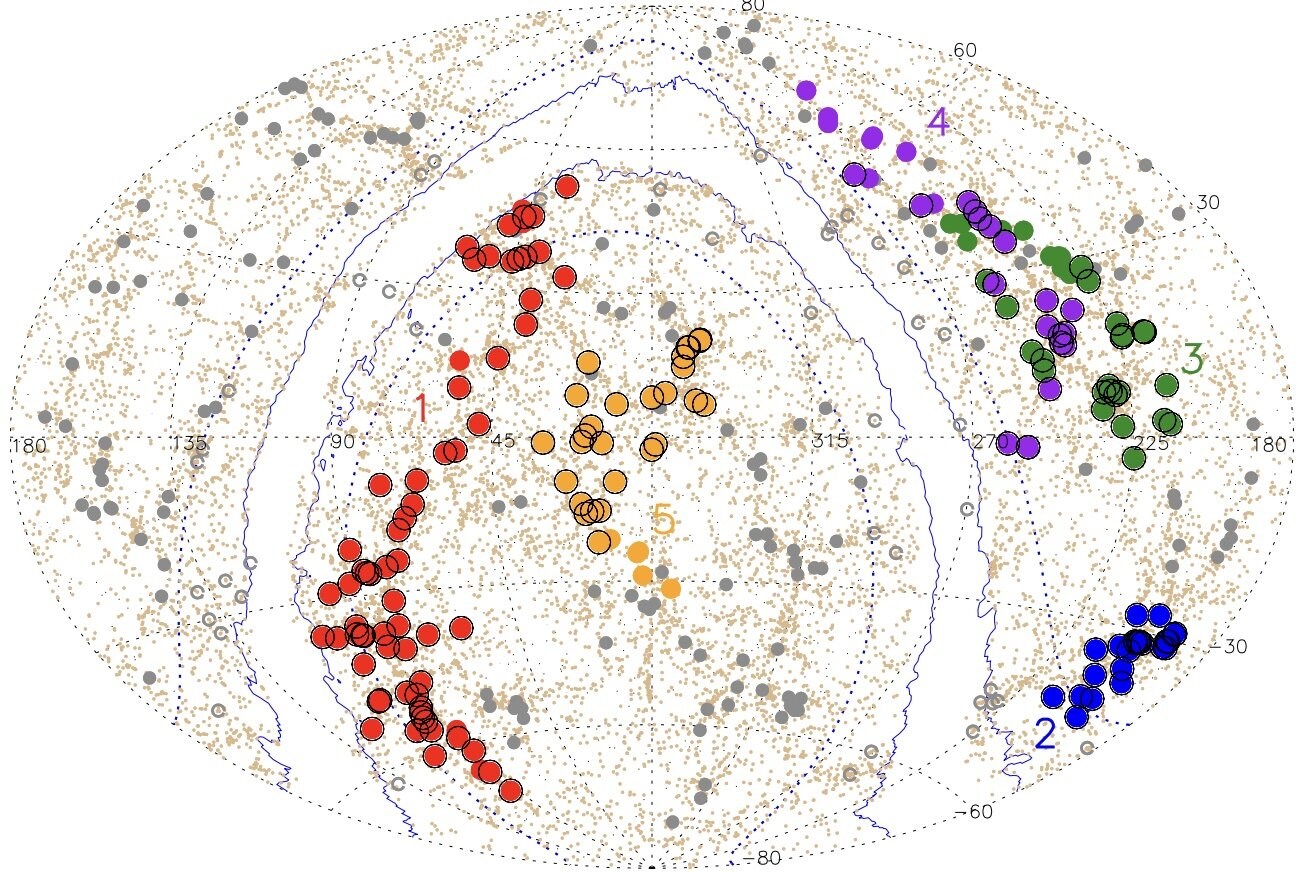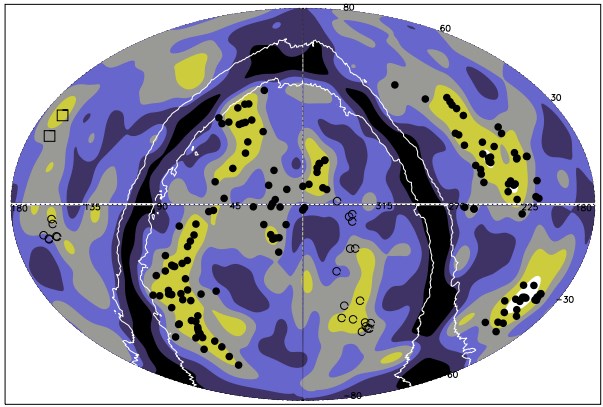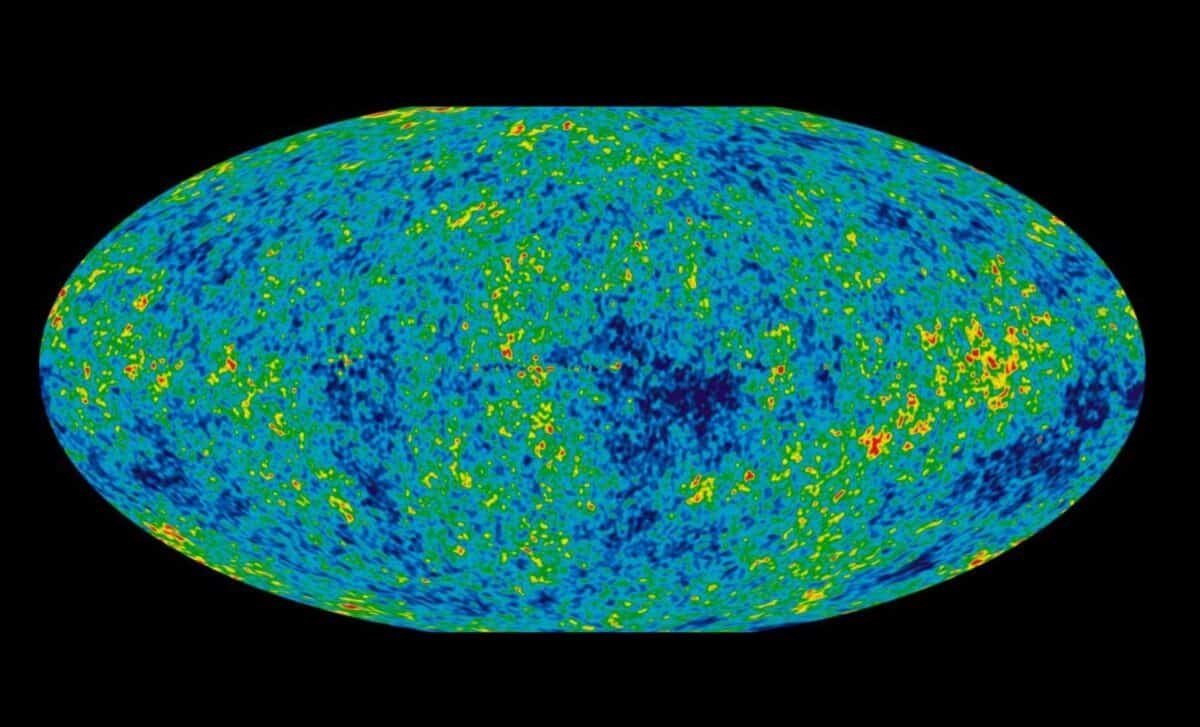 The astronomers have found the largest structure of the universe that has been discovered so far. This gigantic super structure (or superstructure), called “Quipu”, was named inspired by the measurement system of inca civilization consisting of knotted ropes. Quipu’s mass is equal to 200 quadrillion solar mass and its length exceeds 1.3 billion light years.
The astronomers have found the largest structure of the universe that has been discovered so far. This gigantic super structure (or superstructure), called “Quipu”, was named inspired by the measurement system of inca civilization consisting of knotted ropes. Quipu’s mass is equal to 200 quadrillion solar mass and its length exceeds 1.3 billion light years.This incredible discovery was made by a research team led by Hans Bohringer of the Max Planck Institute. The study aims to examine the effects of the large -scale structure of the universe on cosmological measurements.
The biggest thing known
These super structures are defined as huge cosmic structures that contain an arrow number of galaxy clusters and supercolt. Such structures are so great that it can force scientists about how the universe evolved. Quipu and the other four super -structured, 45 percent of the galaxy clusters in the universe, 30 percent of galaxies and 25 percent of the substance. Although these gigantic structures cover only 13 percent of space, they greatly affect cosmological balances.
 According to the researchers, understanding such large -scale structures can better understand the changes of cosmic microwave background radiation (CMB), large -scale gravitational lensing effects and effects on Hubble constant measurements.
According to the researchers, understanding such large -scale structures can better understand the changes of cosmic microwave background radiation (CMB), large -scale gravitational lensing effects and effects on Hubble constant measurements.Quipu’s discovery was made within the scope of Classix (Cosmic Large-Scale Structure in X-rays) where X-ray galaxy clusters were analyzed. X-ray cluster observations detect radiation spreading from very hot gases and ensure that the galaxy clusters are detected more clearly.
Bohringer and his team used advanced observation techniques to determine these super structures, which are 130 to 250 megaparsek (about 420 to 815 million light years). The fact that the structure was in a filament -like form was inspired by the fact that the Inca civilization is called Quipu because of its similarity to the knotted recording system.
According to the researchers, there are significant differences between the galaxy density in the super structures and the isolated galaxy clusters. This is thought to be caused by the larger and more mass clusters of the clusters of isolated clusters rather than a lower density.
It can disrupt our observations
 On the other hand, super structures such as Quipu, on the other hand, cause some fluctuations on the cosmic microwave background radiation (CMB). For those who do not know, CMB is an electromagnetic wave and is thought to come from the farthest of the universe. As a matter of fact, CMB is considered the greatest proof of the Big Bang.
On the other hand, super structures such as Quipu, on the other hand, cause some fluctuations on the cosmic microwave background radiation (CMB). For those who do not know, CMB is an electromagnetic wave and is thought to come from the farthest of the universe. As a matter of fact, CMB is considered the greatest proof of the Big Bang.The fluctuation process in CMB radiation is known as the integrated Sachs-Wolfe (ISW) effect and causes the energy of CMB photons passing through super structures to change. These fluctuations make it difficult for CMB to be analyzed correctly by creating unleaded prominent effects (foreground artifacts) in observations.
These structures can affect not only the CMB but also the measurements of the Hubble constant defining the expansion rate of the universe. As it is known, the galaxies do not only exhibit the expansion movement, but they also have local movements known as PECULIAR VELOCITIES.
Structures such as Quipu greatly affect these movements and make it difficult to measure the expansion rate clearly. High mass shoots add deterioration to our observations by changing the flow direction and speed of the galaxies. This is an important source of error in determining the exact value of the Hubble constant.
Another important effect of super structures is large -scale gravitational lensing. The largest structures of the universe disrupt the images and change their shapes by bending the light of the galaxies in the background. This lensing effect may increase the margin of error in the measurements in the sky maps and make it difficult to model the large -scale structure of the universe.
Can the universe model explain super structures?
The current standard LAMBDA-CDM (Dark Energy and Cold Darkness) model is considered the most powerful theory that successfully explains the wide-scale structure of the universe. Researchers, LAMBDA-CDM model, such as Quipu, such as simulations showing simulations, he says.
Researchers also say that these super structures are not permanent. According to the study, on a cosmic time scale, these structures are expected to be divided into smaller pieces after a while and begin to collapse.